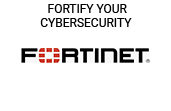
Patrick Supanc, Chief Product Officer at Coursera, discusses how the company’s new Skills Tracks are helping organisations bridge the skills gap through data-driven, role-based learning.
Coursera is stepping up efforts to help organisations future-proof their workforces with the launch of Skills Tracks, a role-based, data-driven learning solution designed to close the skills gap at speed and scale. The platform leverages Coursera’s proprietary Career Graph technology, which analyses millions of labour market data points to align learning with real-world job demands.
By combining content from top universities and industry partners with hands-on practice, performance-based assessments, and verifiable credentials, Skills Tracks offers a measurable way for employers to develop talent across critical domains such as generative AI, data, IT, and product management. For learners, it provides a structured, motivating path from foundational knowledge to expert proficiency — ensuring that new skills aren’t just learned, but demonstrated.
In this interview, Patrick Supanc, Chief Product Officer at Coursera, discusses with Sandhya D’Mello, Technology Editor, CPI Media Group, how Skills Tracks are transforming the way organisations approach workforce development and how data-driven insights are enabling more strategic, measurable upskilling.
Interview Excerpts:
Employers increasingly identify skill gaps as a barrier to transformation. How does Coursera’s Skills Tracks directly address this challenge in a measurable way?
Skills Tracks help close skill gaps faster through data-backed, role-based learning tailored to high-demand areas like Generative AI (GenAI), Software & Product, IT, and Data. Each track is designed to build job-relevant skills through content from top universities and industry leaders, hands-on practice, and real-world assessments. Powered by Coursera’s Career Graph, Skills Tracks align learning with real-time labor market data and business needs, so organisations can monitor outcomes and measure how learning translates into workforce readiness. Learners earn credentials that validate proficiency, and progress is tracked via dashboards that provide visibility into enrollments, path progression, skill achievements, and completion rates. By connecting skills to roles, tracking progress, and validating learning through assessments and credentials, Skills Tracks give employers a clear, measurable way to develop talent and drive transformation.
Could you explain how Skills Tracks are designed and how they guide learners from foundational knowledge to expert proficiency?
Skills Tracks — our new data-driven, role-based learning solution — maps learning to occupations and the skills most valued by employers. As learners progress through a structured learning path aligned to their role, they earn credentials that mark their journey from beginner to expert, providing clear recognition and motivation at each stage.
“Every credential is awarded based on rigorous assessments, ensuring teams and leaders can trust that new skills are not only learned but also demonstrated.”
Career Graph is described as the data backbone of this offering. How does it leverage labour market insights to ensure learning remains relevant to real-world job demands?
Coursera’s proprietary Career Graph combines millions of labor market data points, third-party competency frameworks, and Coursera’s skills taxonomy, to precisely map the relationships between jobs, skills, and learning content, ensuring organisations can close skill gaps faster. By linking jobs and in-demand skills with courses and credentials on Coursera in real time, our Career Graph ensures each Skills Track stays grounded in the realities of today’s labor market. Skills Tracks continuously update to stay current with market demands and aligned with changing skill requirements for roles. For learners, it provides a clear roadmap with visible milestones for mastering the right skills required for their career path. For organisations, it offers a scalable system to support workforce planning and development and directly connects skill acquisition with business performance and growth.
Beyond learning content, how do the verifiable credentials and assessments within Skills Tracks give both employees and employers confidence in demonstrated skills?
In a skills-based economy, verifiable credentials and assessments go beyond content mastery to validate real-world, job-ready capabilities. By proving not just what employees know, but what they can do, these credentials build professional credibility, support career growth, and provide employers with trusted evidence of critical skills in action. This higher level of evidence is something our enterprise partners have been eager for us to build — and now we have. This visibility — and validity — allows leaders to make informed talent decisions, track progress, and invest strategically in employee upskilling. Skills Tracks directly connect skill acquisition with business outcomes, helping organisations boost innovation, productivity, and retention.
Many organisations struggle to keep pace with rapid technological change. How do Skills Tracks help companies accelerate technology adoption and broader workforce transformation?
Skills Tracks drive faster workforce transformation by delivering adaptive, role-based learning across key technology and business domains. We are able to draw on content from industry leaders and universities like Microsoft, AWS, Yale, and Stanford to deliver the best upskilling experiences quickly. We have started with a focus on areas that our enterprise customers are telling us are most urgent for their business to address — areas like mobile development, product management, cybersecurity, IT support, data engineering, and AI — enabling broad adoption across business functions. This systematic approach helps organisations adopt new technologies faster, scale innovation, and maintain a competitive edge in a rapidly evolving market.
Looking ahead, what future enhancements can learners and employers expect from Coursera?
In the coming months, Coursera will introduce additional Skills Tracks and enhanced features. These include skill diagnostics to place learners at the right level and verified skill paths with performance-based evaluations to produce credentials that reflect practical, job-ready expertise. Beyond Skills Tracks, Coursera has recently introduced a series of AI-powered innovations across the platform. These include Role Play, which leverages AI personas to help learners practice soft skills in realistic scenarios; enhanced Course Builder tools that enable customers and partners to design courses at scale using GenAI; and new AI-based assessments that deliver timely, rigorous feedback while maintaining academic integrity. Together, these innovations make workforce learning more personalised, scalable, and effective, equipping organisations to build future-ready teams that thrive amid rapid technological change.





